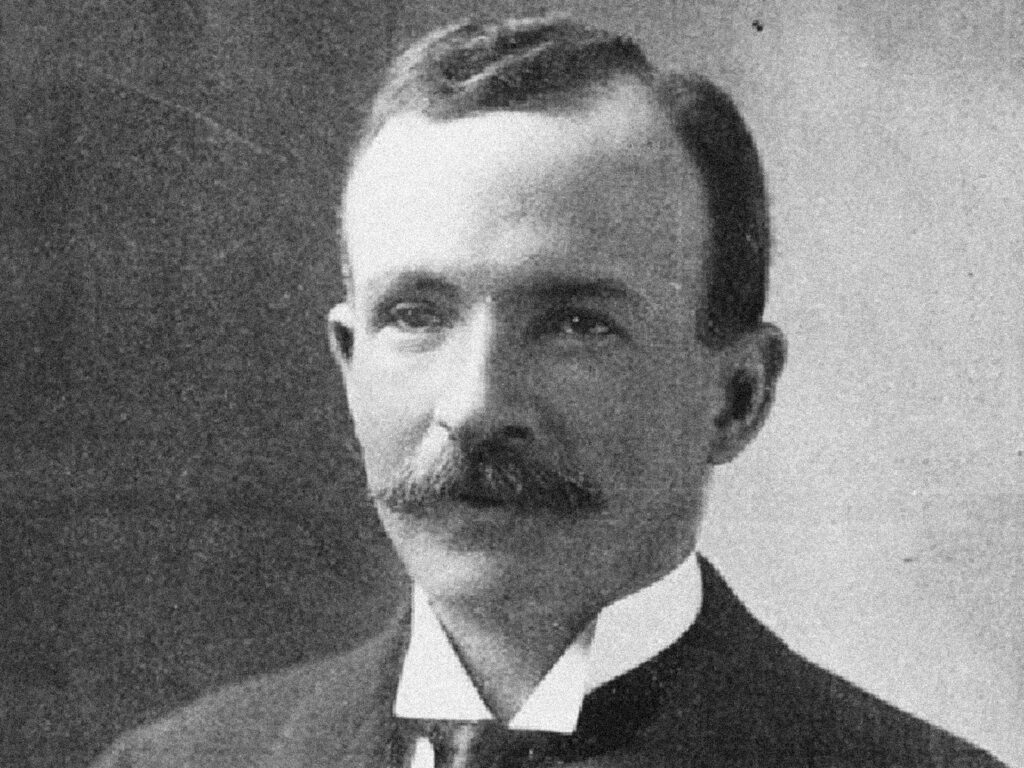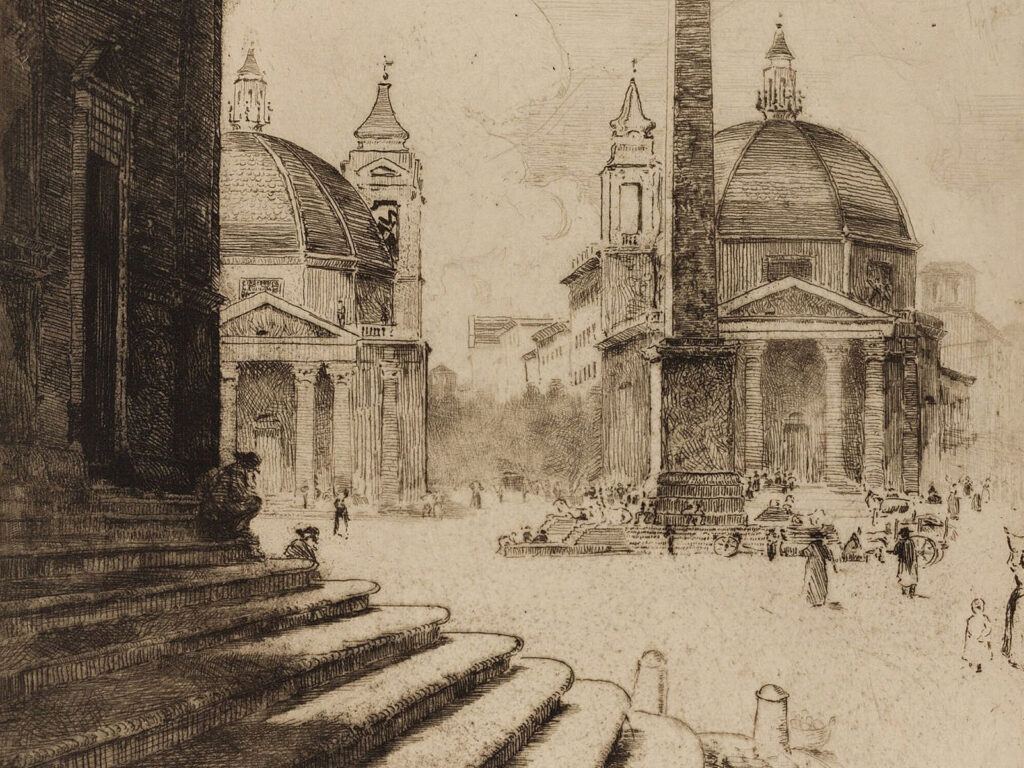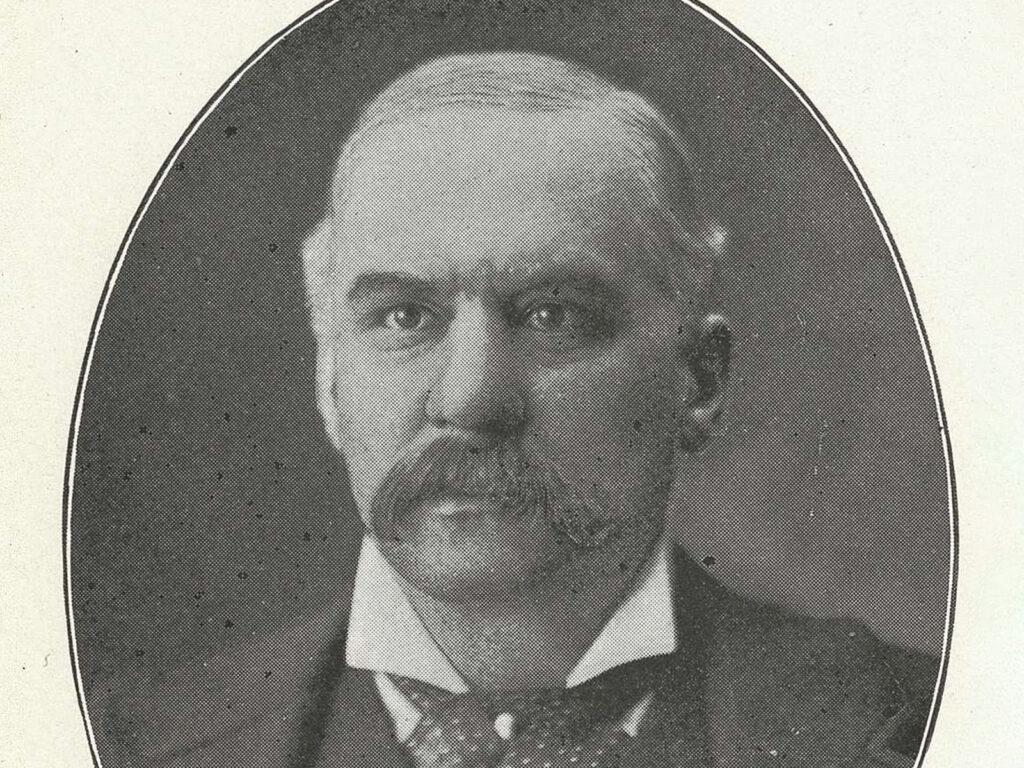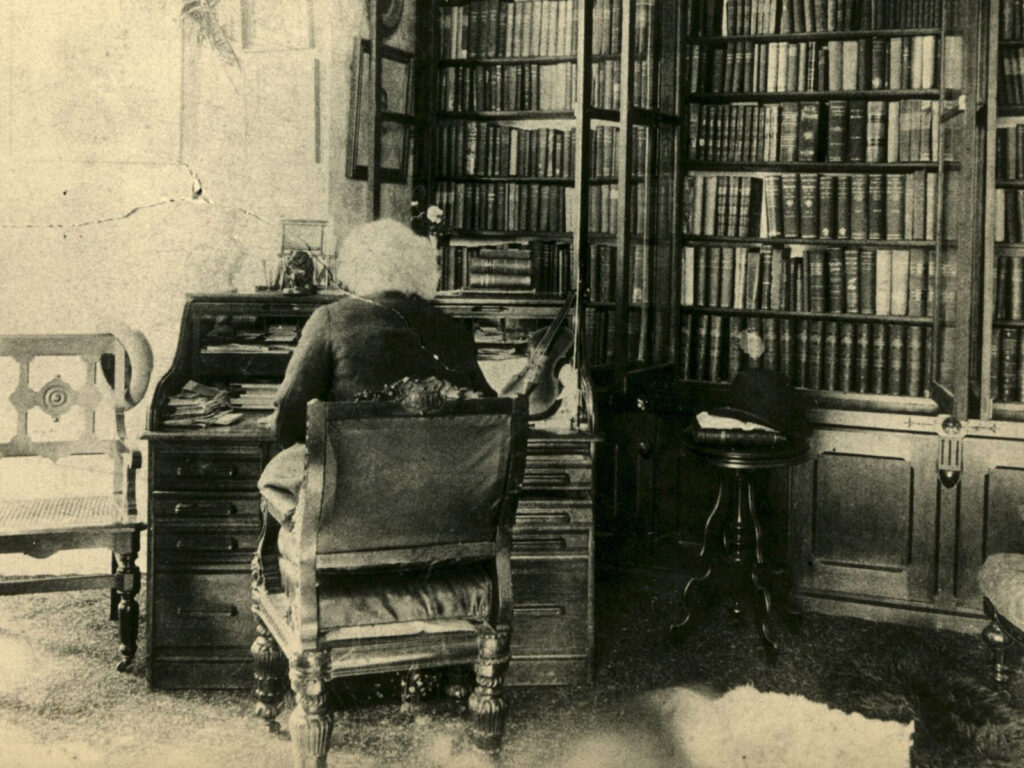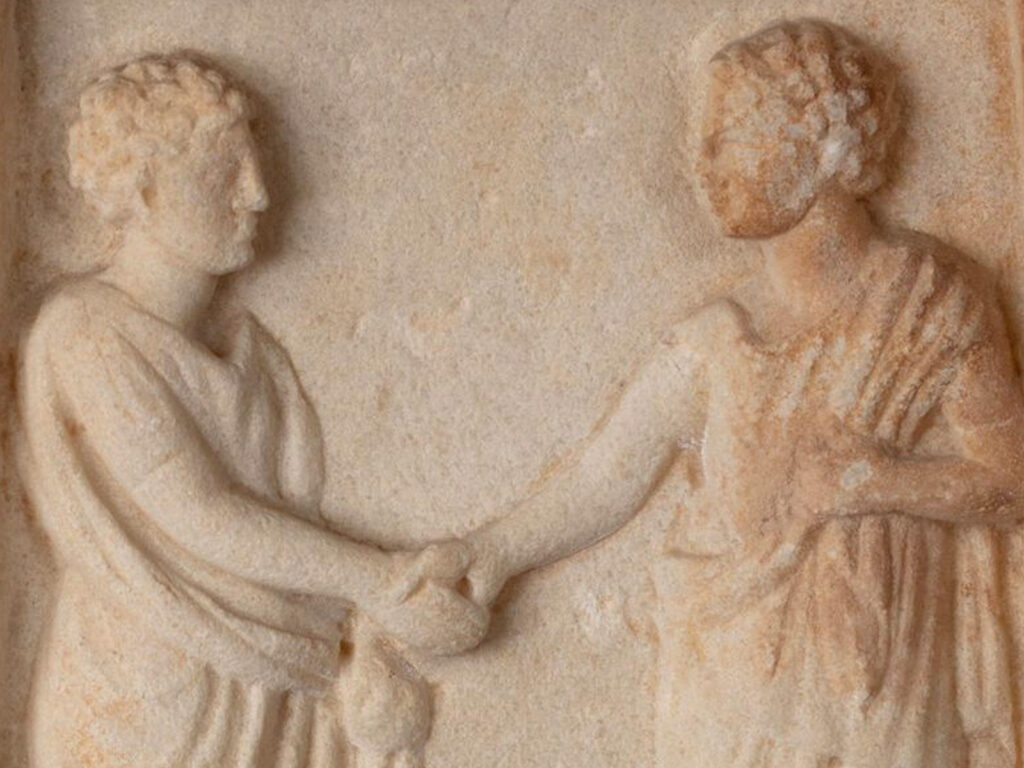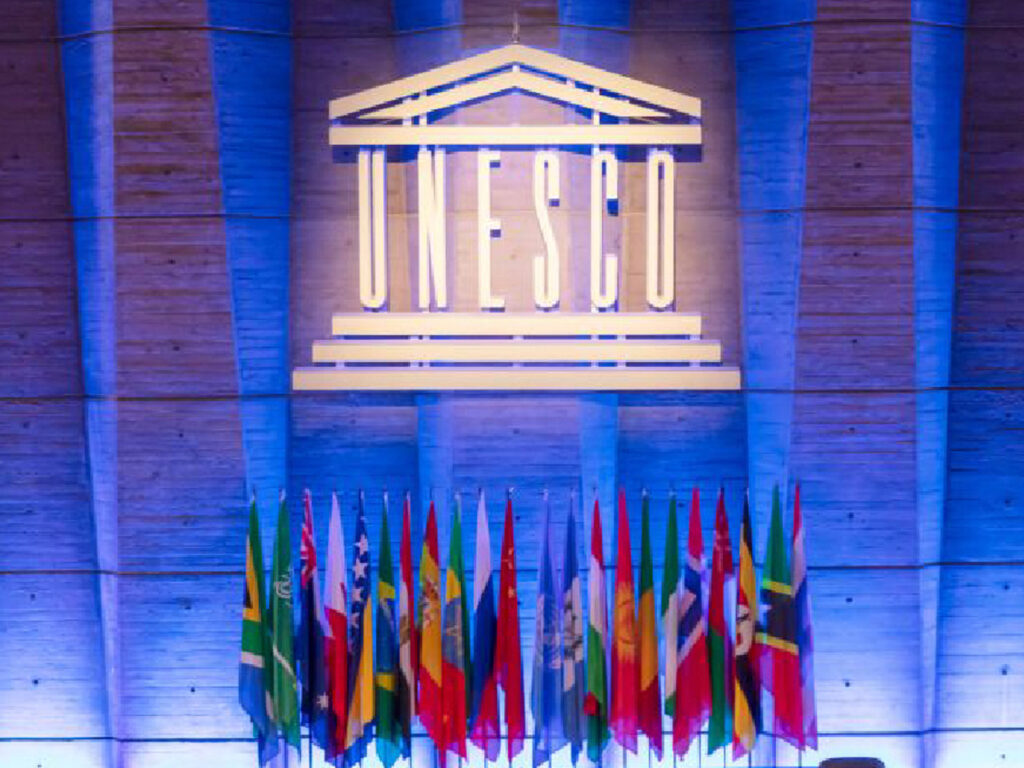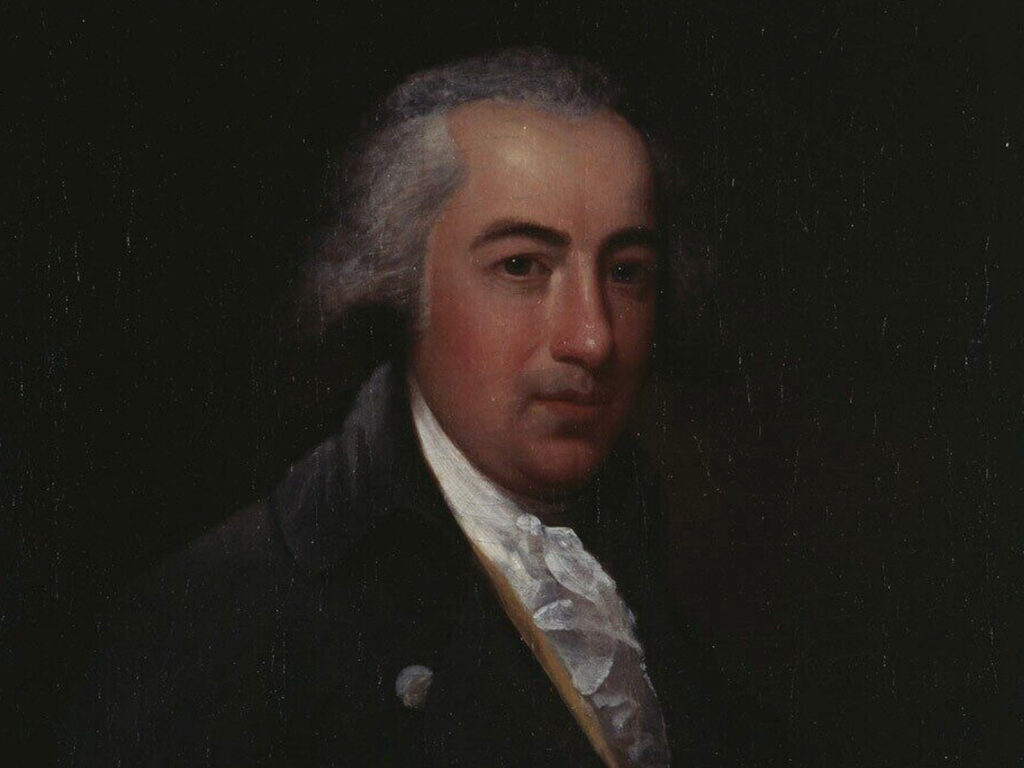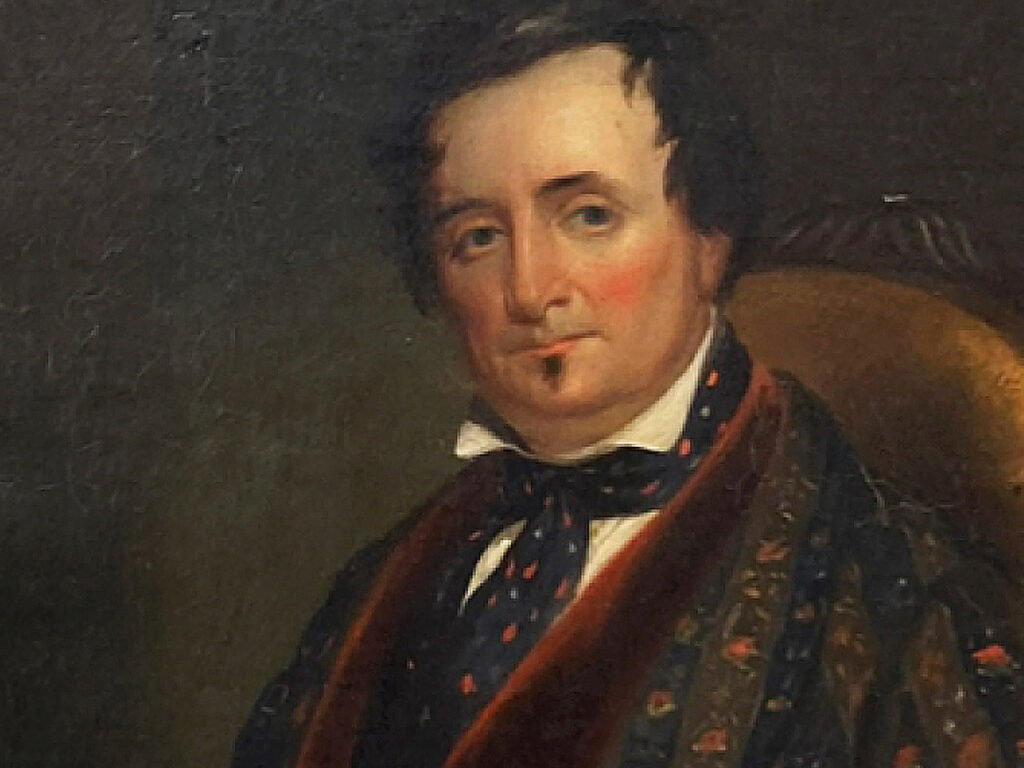A testament to his impact as an influential twentieth-century American antiquities collector, Edward Perry Warren’s (1860–1928, H ’26) name can be found linked to hundreds of ancient objects housed in institutions across the United States, including more than five hundred works at the Bowdoin College Museum of Art (BCMA) alone. His name may be familiar to some in the present day as the first modern owner of the famous Warren Cup, a Roman drinking vessel depicting two male pairs in moments of sexually explicit engagement. During his lifetime, Warren and his partner, John Marshall, were recognized for their contributions to the development of American antiquities collections, particularly that of the Museum of Fine Arts (MFA) in Boston where they worked as purchasing agents with Curator Edward Robinson. Warren also established the brotherhood and intellectual network of Lewes House in East Sussex, England, enabling him to inhabit the same broad circles of creatives such as Oscar Wilde (1854–1900), Henri Matisse (1869–1954), and Augustus John (1878–1961), as well as collectors including Bernard Berenson, Isabella Stewart Gardner, J.P. Morgan, and Gertrude and Leo Stein.

E.P. Warren pictured with John Marshall (right), his long-time partner (both in the business of collecting and in his private life). Edward Reeves, Ned Warren and John Marshall, 1895, photograph.
Edward Perry Warren
Brooke WrubelE.P. Warren pictured with John Marshall (right), his long-time partner (both in the business of collecting and in his private life). Edward Reeves, Ned Warren and John Marshall, 1895, photograph.

A silver stemmed drinking-cup depicting men in sexual congress. Drinking cup, Roman, 15 BCE–15 CE, Silver. The British Museum, 1999, 0426.1. link
Born in Waltham, Massachusetts, Warren had a childhood seemingly defined by otherness. Unlike his peers, Warren had a unique set of interests that included a nightly, object-centric ritual of rearranging a small collection of his mother’s china in his bedroom and a preference for music and sculpture over sports. Ultimately, these differences engendered his struggle to meet the societal expectations of young boys. It was through his encounters with the abundant antiquities collections in Europe, particularly statuary, that Warren was able to find the imperative solace for which he longed. An early aesthetic preference for male and female bodies in the forms of plaster casts and sculptures developed into a broader visual interest in depictions of nude figures across media. Acknowledging his own adolescent isolation and the limited opportunities for engagement with antiquities within the US, Warren wrote, “These visits to Europe gave me my only sense of real life[…]. I was a boy cloistered from the American world in a domestic museum on top of Beacon Hill, yearning for those things of which I had inadequate evidence at home.”
These experiences abroad formed the foundation of Warren’s fascination with the ancient Mediterranean world, which he pursued during his undergraduate studies at Harvard University and subsequent studies at the New College of the University of Oxford. Warren gained valuable insights into collecting practices by observing, and sometimes intervening in, his mother’s purchases. He often criticized her tendency to procure a greater quantity of lesser quality works rather than preserving funds for truly exceptional objects. Aware of the dearth of antiquities on American soil—and equipped with purchasing power by means of his family’s wealth derived from the S.D. Warren Paper Mill in Westbrook, Maine—Warren set out to do, as he put it, “the work most needed of all works, supplying eventually the terrible gap that exists on this new continent, the absence of that which delights the eye and rests the soul.” In addition to serving as a purchasing agent for the MFA, Warren was a donor or seller for other American institutions with developing antiquities collections, including the Rhode Island School of Design, Harvard University, the University of Pennsylvania, Bryn Mawr College, and the University of Chicago.

Silver Tetradrachm of Syracuse, Greek, 317–310 BC, silver. Bowdoin College Museum of Art, Gift of Edward Perry Warren, 1895.1.
Although Warren had a special connection to Westbrook, Maine, it was his affiliation with the Walker sisters, Mary (1839–1904) and Harriet (1844–1898), that seemed to firmly establish his relationship with Bowdoin College. Following the completion of the Walker Art Building in 1894, the Walker sisters consulted with Warren to compile a collection of antiquities. Shortly thereafter, he made his first donation of a silver tetradrachm of Syracuse in 1895. Starting in 1906 he began donating antiquities more prolifically, most of which date back to ancient Greece and Rome. Warren’s gifts continued until he passed away at the end of 1928, after which his final donations to the Museum were bequeathed objects that entered the collection in 1930.

Assyrian Relief: Head of Ashurnasirpal II from Kalhu (Nimrud), Assyrian, ca. 875–860 BCE, gypsum (Mosul alabaster). Bowdoin College Museum of Art, Gift of Edward Perry Warren, 1906.4
To address the “terrible gap” of antiquities in the US, Warren constructed a representative collection of objects from the ancient Mediterranean world through his donations, namely terracotta vases, statuary, jewelry and other luxury arts, figurines, ephemera, coins, and fragments. While his primary interests were Greek and Roman works, Warren’s awareness of and fascination with the broader ancient world is evident in his select donations of Egyptian, Assyrian, and Orientalizing objects. Three such examples are the Assyrian relief of the Head of Ashurnasirpal II from Kalhu, an Assyrian chalcedony cylinder seal depicting a hero fighting a bull, and an Orientalizing Greek chalcedony conoid seal with Intaglio of Artemis and Lions. As such, Warren’s donations present the wide range of geographies and time periods of the ancient world.
Warren’s donations to the BCMA suggest that he aspired to emulate the educational training he received at Oxford by bolstering the ancient collection to encourage object-based learning and teaching. As evidenced by this exhibition and its online companion, he has donated many prime, didactic works among his hundreds of objects. In a 1915 letter to Professor Henry Johnson (1855–1918), then director of the College museum, Warren elucidated his pedagogical priorities. He sought to provide “illustrative material for study,” emphasizing that students “must have specimens at hand.” Fragments form one such category, underscoring Warren’s commitment to enabling Bowdoin students to engage tangibly with the ancient past. Two remarkable examples are the red-figure skyphos (drinking cup) fragment with flying Eros, and the black-figure krater (vase) fragment with horse head, both of which are believed to have been charred during the Persian sack of Athens in 480 BCE.
Warren furthered the Museum’s collection by working closely with John Beazley (1885–1970), a prominent twentieth-century scholar of Greek vase painting. The fruitful nature of their relationship is evidenced by a 1915 letter in which Warren encourages Johnson to formally thank Beazley for his contributions to the preparation of a list of Warren’s upcoming donations. It was Beazley who identified the attic red-figure eye kylix (cup) as the hand of the Bowdoin Eye Painter, and he later went on to identify thirty of the forty-one vessels or vessel fragments that have since been classified as, or associated with, the work of this artist. This comprehensive list includes pieces that are housed in the Musei Vaticani, the Villa Giulia, the National Archaeological Museum, Athens, the Metropolitan Museum of Art, and the British Museum. As a result, this kylix (cup) inserts the BCMA’s ancient collection into the larger scholarly discourse surrounding antiquities and establishes connections between pieces in other important collections. Beazley also identified a new painter in the artisan behind the red figure lekythos (oil flask), the name vase for the Bowdoin Painter.
While Warren’s engagement with the ancient Mediterranean world was undeniably object-centric, he dedicated many years to the formal study of the classics out of which his passion for literature emerged. In the autobiographical portions of Osbert Burdett and E. H. Goddard’s Edward Perry Warren: The Biography of a Connoisseur, Warren expressed his love for Virgil’s poetry, “especially the Eclogues,” the second of which he then “learnt […] by heart” along with “the love tirade of Dido.” Warren also developed a fondness for more contemporaneous literature that builds from ancient models, a trend explored in this exhibition through works across media that refashion elements of the ancient Mediterranean world. One such literary example is Percy Bysshe Shelley’s Adonais: An Elegy on the Death of John Keats, which deliberately borrows elements of both Greek literature and mythology. Warren’s own words reflect the highly personal relationship he had with that particular text: “I learnt the final stanzas of Adonais on a rock by a river. A new glory and beauty had dawned upon me, the glory of human passion and aspiration accepted as beautiful and holy in itself, the world freed from a reproach, the veil lifted, sunlight instead of altar lights.”
E.P. Warren is one of the more eminent twentieth-century antiquities collectors but ought not to be misinterpreted as representative of his contemporaries; he is rather distinctive in his practices and objectives. It is precisely the idiosyncratic nature of his activities as a purchasing agent, seller, and prolific donor that elevates his legacy, the objects themselves, and, ultimately, the Bowdoin College Museum of Art as one of the primary recipients of his carefully curated donations. Given the ways his gifts have continued to fuel individual student research projects, coursework, and exhibitions, his educational motivations have undoubtedly come to fruition.
David Sox, Bachelors of Art: Edward Perry Warren and the Lewes House Brotherhood (London: Fourth Estate, 1991), xi.
Burdett and Goddard, Edward Perry Warren: The Biography of a Connoisseur (London: Christophers, 1941), 14.
Dyfri Williams, The Warren Cup (London: The British Museum Press, 2006), 20.
The term “Orientalizing” denotes works produced in Greece during the eighth and seventh centuries BCE in which patterns, motifs, and other decorative elements reflect an Egyptian and/or Near Eastern influence.
Edward Perry Warren to Henry Johnson, 9 December 1915, call number A05.02.01, Box 1, Folder 9, George J. Mitchell Dept. of Special Collections & Archives, Bowdoin College Library, Brunswick, Maine.
Ibid.
Burdett and Goddard, Biography of a Connoisseur, 20.
Burdett and Goddard, Biography of a Connoisseur, 42.
